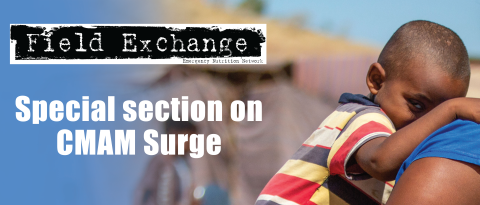Antimicrobial and micronutrient interventions for the management of infants under six months of age identified with severe malnutrition
Research snapshot1
Infants under 6 months (U6M) contribute a significant proportion of the burden and mortality of severe malnutrition globally, with 3.8 million infants U6M estimated as being severely wasted and 4.7 million moderately wasted. Evidence of underlying aetiology in this population is sparse but it is known that the group includes ex-preterm and low birthweight (LBW) infants. They also represent a unique population given their dependence on breastmilk or a safe, secure alternative. Nutrition agencies and health providers struggle to make programming decisions on interventions for this group based upon the 2013 WHO Guidelines for the ‘Management of Severe Acute Malnutrition in Infants and Young Children’ since there is no published interventional trial data that focusses on this population. This review summarises the evidence-base for a selection of common interventions in order to inform policies for the management of severely malnourished infants U6M. Of the 94 articles identified for inclusion, none focused exclusively on severely malnourished infants U6M. There was, therefore, a lack of direct evidence for this population group. In closely related populations, the evidence-base was also neither strong nor extensive.
Key findings by intervention were:
- Antibiotics: systematic use, as per current WHO guidelines
- Deworming: no evidence of systematic use in infants but some evidence in breastfeeding mothers of malnourished infants
- Vitamin A: use of low-dose supplementation in deficient populations only
- Vitamin D: 6 months supplementation, as per current WHO guidelines for LBW
- Iron: routine use not recommended
- Zinc: supplement as per guidelines for infants with diarrhoea and routine use in regions with zinc deficiency
- Folate: routine use not recommended
- Maternal supplementation: insufficient evidence to justify routine use
- ReSoMal: use in malnourished infants U6M, as per current WHO guidelines
Considerable heterogeneity in terms of the age range of the population studied, an anthropometric definition of malnutrition, the dosage and duration of interventions and the outcomes studied make it challenging to summarise the evidence. However, the results provide an initial evidence-base to inform interim policy and programme decisions and future research agenda. More guidance for programmers based on increased evidence is urgently needed.
Subscribe freely to receive Field Exchange content to your mailbox or front door.
Endnotes
1 Campion-Smith, T. J., Kerac, M., McGrath, M., & Berkley, J. A. (2020). Antimicrobial and micronutrient interventions for the management of infants under 6 months of age identified with severe malnutrition: a literature review. PeerJ, 8, e9175. https://doi.org/10.7717/peerj.9175


